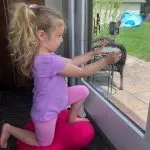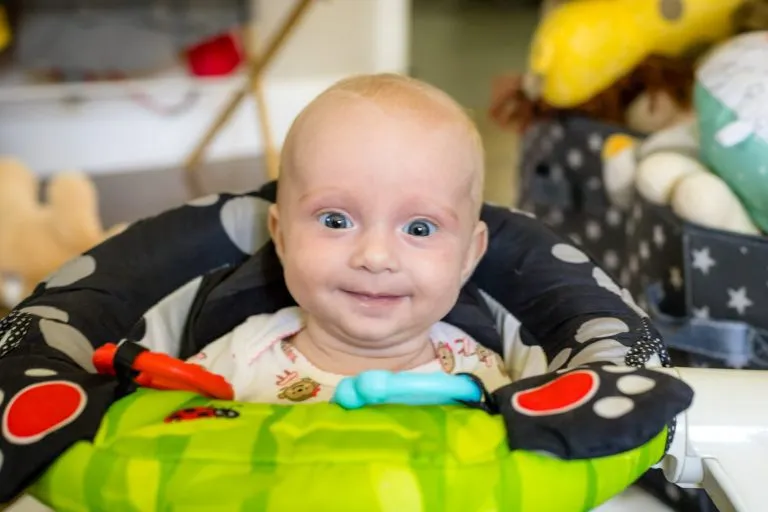All About Crawling: 6 Benefits of An Under-Appreciated Milestone In Children
 As parents, we often have the camera ready and the endless praise for our baby’s first roll-over, first step, and their first words. But, do you have their first few crawls on their hands and knees across the room on your camera roll or album? Many parents don’t. It’s so interesting – this is perhaps the most important developmental milestone, but definitely the most under-appreciated. It is often considered the milestone that is the biggest nuisance because, suddenly, your baby is on the move and you have to start baby proofing and keeping your floors cleaner. I want to share with you the benefits of crawling. Remember, once your baby pulls to standing and takes that first step, the opportunity for these benefits is lost forever.
As parents, we often have the camera ready and the endless praise for our baby’s first roll-over, first step, and their first words. But, do you have their first few crawls on their hands and knees across the room on your camera roll or album? Many parents don’t. It’s so interesting – this is perhaps the most important developmental milestone, but definitely the most under-appreciated. It is often considered the milestone that is the biggest nuisance because, suddenly, your baby is on the move and you have to start baby proofing and keeping your floors cleaner. I want to share with you the benefits of crawling. Remember, once your baby pulls to standing and takes that first step, the opportunity for these benefits is lost forever.
Your Baby’s Trunk and Core Muscles Get Stronger and Balance Skills Continue To Develop.
Just as a 30 second plank does wonders for our core and strengthens our abs, back muscles, obliques, shoulders and hip muscles, crawling does the same for babies. Weight-bearing through the shoulders and hips builds the strength necessary for good sitting and standing posture. It also takes skill to balance on all fours, which is an important building block for stable walking.
Both Sides of the Brain Learn to Work Together
The two sides of your baby’s brain need to learn to work together for your baby to have coordinated movement on both sides of their body. Crawling on their hands and knees helps to stimulate this and teaches the brain to work together. This helps your baby’s motor skills to become more coordinated between both sides of the body.
Baby’s Visual Skills Continue To Develop
 Did you know that your baby’s vision is still developing throughout their first year? Their visual world is still very close to them, within 3 feet from them. When your baby is gazing at the floor while crawling, they are strengthening the tiny muscles around their eyes and improving their visual motor skills. Crawling also helps to develop binocular vision, or the ability to look ahead in the distance, then back down at their hands while crawling. These visual skills play a big roll for school age children, looking up at the teacher and back to their desk work.
Did you know that your baby’s vision is still developing throughout their first year? Their visual world is still very close to them, within 3 feet from them. When your baby is gazing at the floor while crawling, they are strengthening the tiny muscles around their eyes and improving their visual motor skills. Crawling also helps to develop binocular vision, or the ability to look ahead in the distance, then back down at their hands while crawling. These visual skills play a big roll for school age children, looking up at the teacher and back to their desk work.
Crawling Strengths Your Baby’s Hands and Their Fine Motor Skills
Because your baby is bearing weight through their hands as they crawl, their hand muscles continue to get stronger, promoting future skills for grasping, holding utensils, coloring, holding a pencil and eventually, writing.
Your Baby’s Spatial Skills Become Stronger
Crawling requires motor planning while navigating over toys, under chairs, around people or furniture. This understanding helps your baby learn body awareness and begins to lay the groundwork for higher-level critical thinking skills. The more they explore, the more aware they are of the world around them.
Your Baby’s Self-Confidence is Building 
Babies are often used to being carried or having mommy or daddy nearby. It can be scary to crawl away from their parents for the first time. Taking these risks will help your baby discover their potential and limitations while exploring the world and promoting their learning.
Remember: Crawling doesn’t just happen overnight. It is a long process of commando (belly crawling) scooting, rolling, then eventually pulling those little knees underneath their body onto all fours. Soon they start moving their hands and knees to propel forward. Encourage crawling as much as possible! Promote these skills by getting on the floor with your baby and place toys just out of reach. Some babies will pull themselves to standing and try to go straight to walking, skipping the crawling milestone altogether. Encourage your child to get back onto all fours. There’s no rush for walking. Crawling will make for a stronger child and help them reach their highest potential. Once your baby starts walking, she will have little time for crawling and all of these great benefits will be missed.
For more information on developmental milestones, please visit American Academy of Pediatrics by clicking here.
To download the printable version of this blog, click here.





